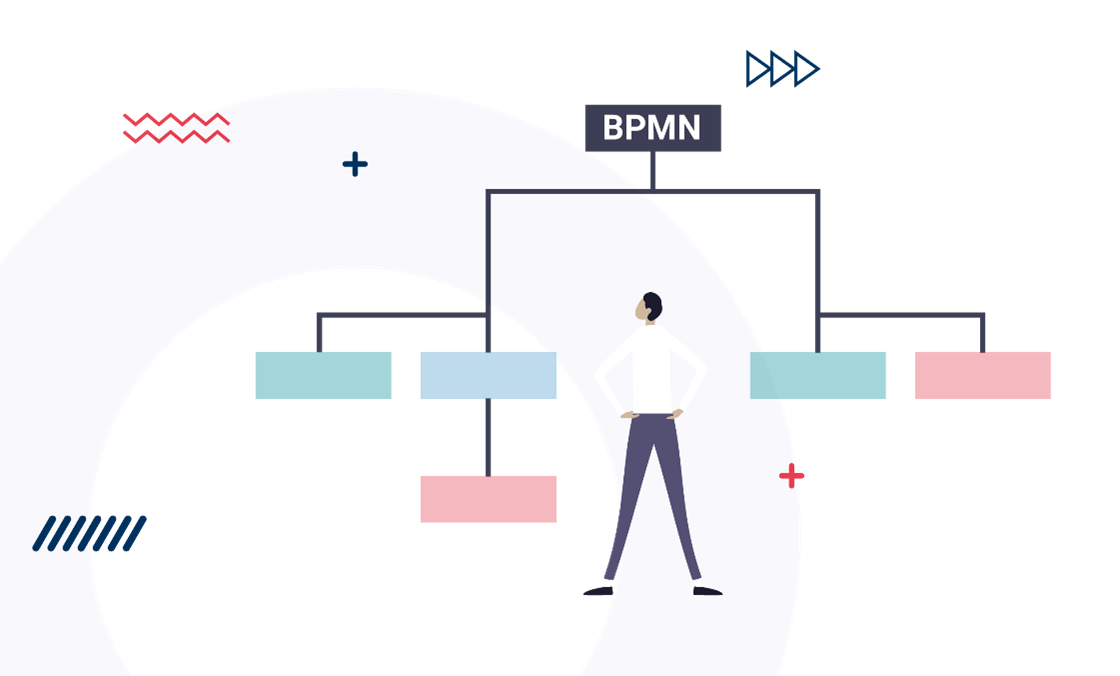Steps for creating a BPMN diagram
Business Process Model and Notation (BPMN) is a business process modelling standard. It is helpful for businesses in performing business process analysis, business process improvement, and business process reengineering. BPMN models are constructed around events, gateways, activities, and flows, the process components responsible for their management, operation, and execution.
IT systems can now understand business process models thanks to the BPMN notation, which can be used to create both visual diagrams and an underlying meta-model.
A diagram is a representation, visualization, or picture of a process. BPMN is a standardized and straightforward visual language for defining business processes. In essence, it is a valuable communication tool for describing business processes. Understanding a BPMN diagram is the first step in creating one.
What is a BPMN diagram?
A BPMN diagram describes the workflow processes with graphic illustrations of various elements. It’s a technique for illustrating each business process and modelling the business activities and the process flow. This visualization uses multiple visual elements to show the logic behind the information flow, making understanding the processes in BPMN easier.
A BPMN diagram’s graphic elements include the following:
Flow elements:
Flow Elements are the components that connect to create the overall workflow in a BPMN diagram. It includes three different elements:
- Events
An event that takes place in the business process flow is represented in this element. A symbol of a circle is used with various other icons to describe the present state of the event.
- Activities
In a BPMN diagram, activities are represented by rounded rectangles. Activities are actions that occur between events during the same period. They represent a modification or activity that resulted in another event.
- Gateways
A diamond-shaped symbol represents the gateway element. In a BPMN diagram, gateways are regarded as decision points, and they can either divide or combine your process.
Swimlane
Swimlanes are symbols used better to organize the BPMN diagram and its numerous components. It comprises a “pool” that can represent a business department and “lanes” that aid in separating procedures.
Connecting Objects
This element depicts how several other components are linked in a BPMN diagram.
To supply your BPMN diagrams with more context, you may use artefacts. Annotations, data objects, or groups are all examples of the several sorts of artefacts the user can utilize.
The diagram elements are easily identified by the users who deal with BPMN diagrams. BPMN diagrams are one of the most effective ways of communicating details of business process management among various departments of an organization.
A BPMN diagram can be created using a few simple steps:
Determine the scope of your BPMN diagram.
A BPMN chart can only be created by completing the first stage of the BPMN diagram. As a result, defining the scope of the process before making the diagram is crucial. All processes must be represented in a BPMN diagram with links between their components from start to finish.
Identify crucial elements
Understanding the BPMN’s information flow can help you identify its components. Shapes are utilized at this step to represent essential elements of the diagram. The shapes must be positioned in the correct order following the workflow.
Link each diagram element
At this step, each diagram element must be linked together to determine their relationship. Remember to show the BPMN workflow. Process management is depicted using BPMN diagrams. If your diagram needs to be clarified, you must start over.
Identify each component of the diagram.
After connecting all of the diagram’s elements, the next step will be to label and analyze each component. A small diagram allows any reader to follow the process flow, but the diagram becomes more complex as more phases are added. Labels are essential when designing a BPMN diagram to describe a lengthy process. They can assist readers in comprehending the BPMN diagram.
Document your explanations in full.
Some components in a BPMN diagram may be difficult to explain using labels. In these circumstances, numbers can relate to specific elements in the process. The numbers are a reference point for supplementary documents that will provide more information on these components. They also aid in providing greater clarity to diverse departments in a marketplace.
Conclusion
When sharing information about business process management across teams and departments, BPMN diagrams are among the most valuable tools available.
What is “An Exclusive Gateway in BPMN”? Find out more here.
Visit our course catalogue for more information on our BPMN training suite.
Sources
BPMN – The Difference Between a Diagram and a Model



